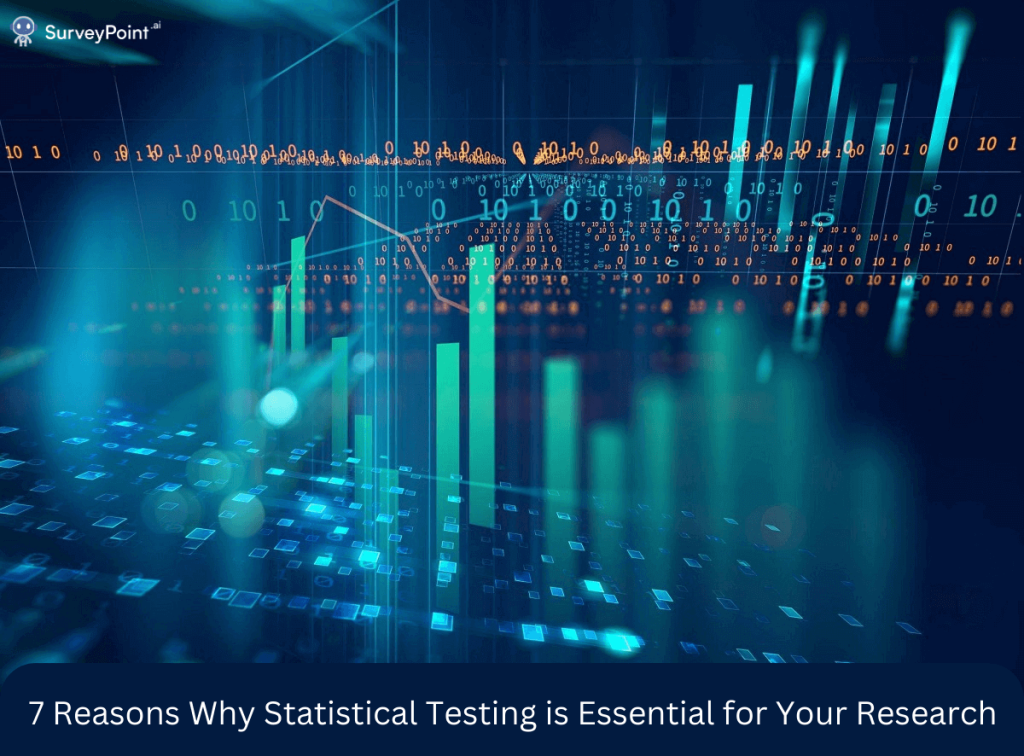Statistical testing is a crucial element of rigorous, impactful research. Tests allow you to derive meaningful conclusions from data and quantify relationships accurately.
In this guide, we’ll explore key reasons why integrating statistical testing into your research is essential for credible and actionable findings.
Statistical Testing Validate Relationships
The core purpose of statistical testing is assessing whether patterns in data reflect a true relationship or are simply due to chance.
By determining statistical significance, tests give you confidence that the connections and correlations you find in data are real. This validation is vital for sound research.
Provides Mathematical Rigor
Statistical significance testing introduces an objective, quantified measurement of results rather than just subjective assessments.
By assigning a mathematical value like a p-value or correlation coefficient to evaluate findings, statistical testing adds tremendous rigor. Claims can thus be backed by hard numbers.
Enables Drawing Reliable Inferences
One major goal of research is making inferences about wider populations based on results from samples.
But samples naturally contain variability. Statistical tests account for these variances when concluding whether a result found in the sample data can be inferred as true for the full population.
Guides Development of Predictive Models
Identifying relationships through statistical testing provides the foundation for creating data-driven predictive models.
Significant variables can be used to model outcomes like forecasting sales, predicting risk, or estimating lifetime value. Statistical testing enables building sound models.

Facilitates Comparisons Over Time
Tests determine whether differences between time periods reflect true effects vs. natural data fluctuations. This differentiation is key for comparing results.
Provides Objective Decision-Making
Longitudinal studies analyzing changes over time periods rely heavily on statistical testing.
Statistical testing empowers making data-informed decisions backed by mathematical validation rather than gut feelings or assumptions.
Management can thus develop strategy rooted in significant data insights rather than guesswork.
Enhances Reproducibility
Statistically sound results are more likely to be replicable by other researchers.
By detailing the testing methodology and parameters, other parties can reproduce experiments and independently validate findings. This boosts reliability.
You Must Read Mastering Statistical Tests: A Step-by-Step Guide How to Choose the Perfect Statistical Tests for Your Data Analysis Success Understanding Method vs. Methodology: A Comprehensive Guide Data Visualization: Meaning, Tools and Techniques
Important Points to Remember
When leveraging statistical tests, keep these aspects in mind:
– Use appropriate tests for your data types and variables
– Test one relationship at a time
– Set parameters judiciously based on standards in your field
– Account for issues like multiple testing and assumptions
– Don’t solely rely on tests – consider totality of evidence
Conclusion
Statistical testing is an indispensable tool in the realm of research. It provides the means to validate hypotheses, quantify uncertainty, and draw meaningful conclusions from data. By employing statistical tests, researchers can ensure the rigor and reliability of their findings, ultimately advancing our understanding of the world around us. In essence, statistical testing is the cornerstone upon which sound research is built, guiding us toward evidence-based insights and informed decision-making.
Integrating statistical testing deeply into your research introduces greater credibility, objectivity, rigor, predictive power, and reproducibility to findings.
The mathematical validation of properly applied tests provides the bedrock for research that delivers true value and impact.
Make statistical testing central to your methodology to elevate your research capabilities to new heights.




